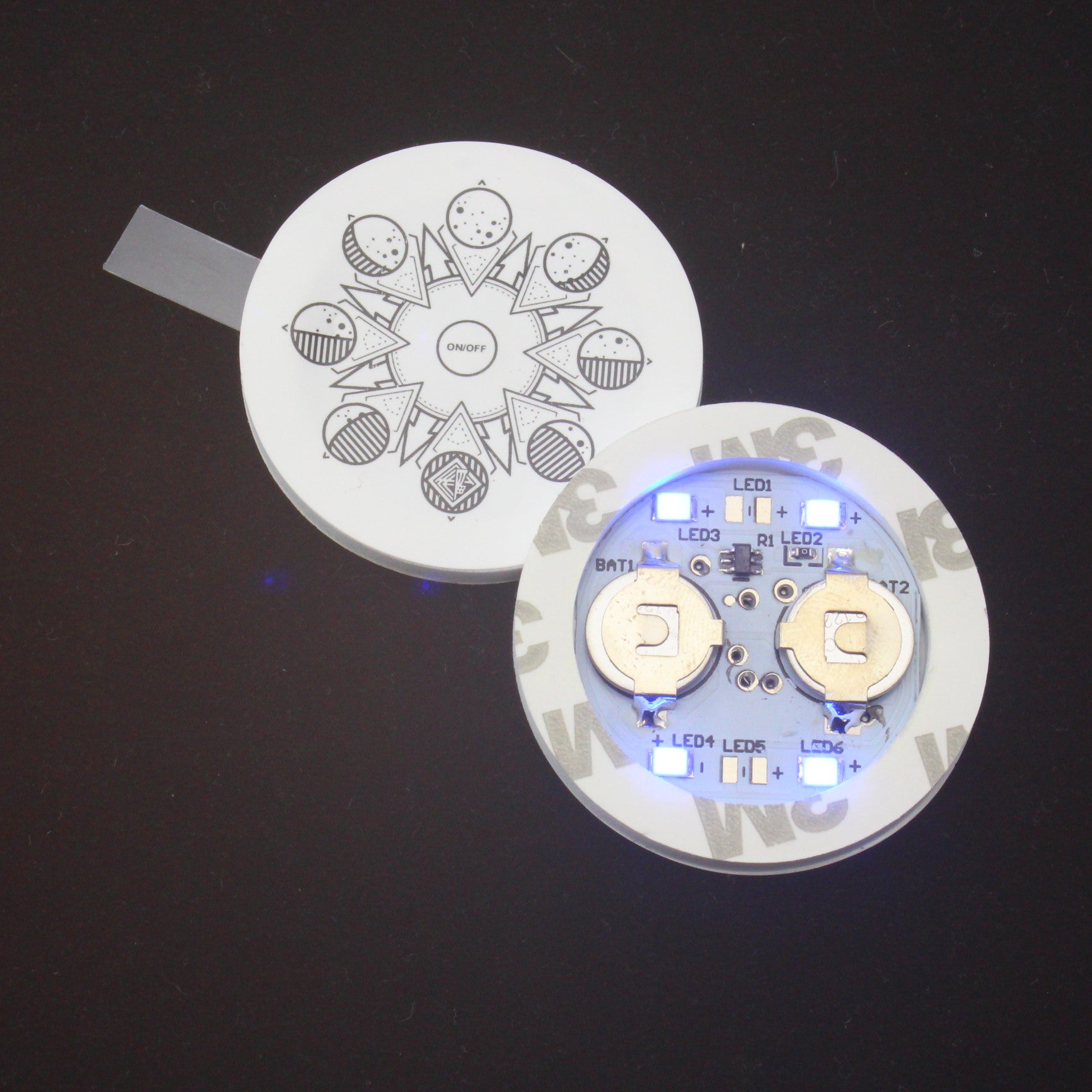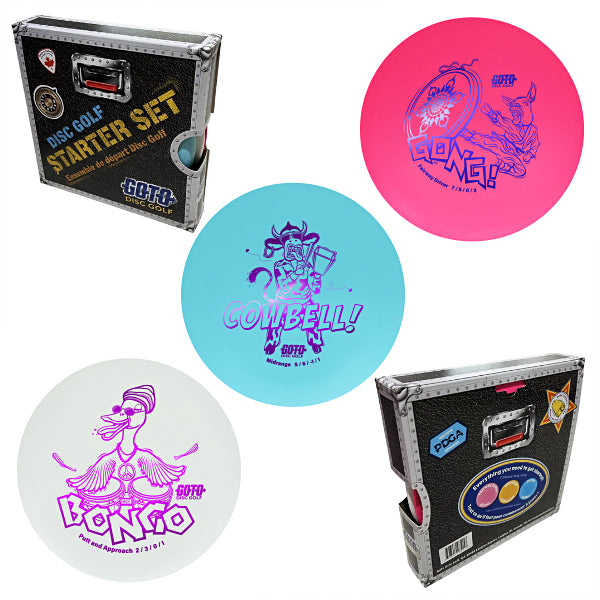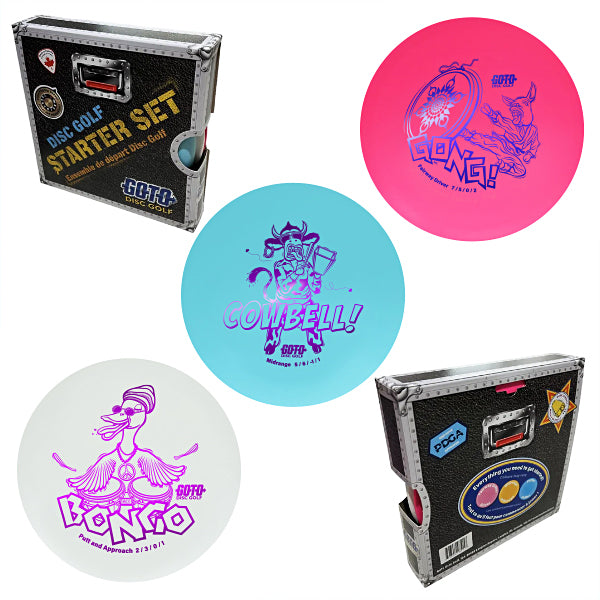ALL ABOUT DISCS
Golf discs are designed to travel different distances with different flight paths. Distances and flight path are affected by how fast the disc is thrown and at what angle the disc is released. As a result of this variability, discs are available in many different molds, plastics and weights. When it comes to buying discs, there are a few key factors to consider: Disc Type, Flight Numbers, Disc Weight and Disc Plastic
Discs are broken down into four categories:
- Driver (speed of 9+)
- Fairway (6 to 8 speed)
- Midrange (4 and 5 speed)
- Putt & Approach (1 to 3 speed).
Each type is designed for specific distances and flight characteristics. Discs with higher speed ratings have slimmer profiles making them more aerodynamic; they need to be thrown with more power and spin to fly at their intended speed and distance. Discs with lower speed ratings have thicker profiles making them less aerodynamic; they are easier to throw straight and control. Beginners should start with lower speed discs. Note that Putt & Approach discs can be further broken down into putters which are used for putting into a basket at a closer range and approach discs which are thrown at a basket from further away. Putt & Approach is a bit of a misnomer because a Putt & Approach can be thrown over 300 feet by an experienced player.
Most discs have four numbers imprinted on the face of the discs. These numbers represent Speed, Glide, Turn and Fade to numerically describe how a disc will fly if it is thrown at a certain speed. These numbers were created by Innova Discs to compare the different flight paths of Innova discs of the same speed category. Innova defines them as follows:
Speed (1 to 14): Speed is the rate at which a disc can travel through the air. High speed discs are not recommended for beginners as they require more power to fly properly.
Glide (1 to 7): Glide describes a disc's ability to maintain loft during flight. Discs with more glide are best for new players, and for producing maximum distance. Beginners wanting more distance should choose discs with more glide. Discs with less glide are more accurate in high wind situations.
Turn (+1 to -5): High Speed Turn is the tendency of a disc to turn over or bank to the right for right-hand backhand (RHBH) throws and to turn over or bank to the left for left-hand backhand (LHBH) throws during the initial part of the flight. A disc with a -5 turn rating will turn the most; discs with more turn are easier to throw for beginners.
Fade (0 to 5): Low Speed Fade is the discs tendency to hook left for RHBH throws and to hook right for LHBH throws at the end of the flight. A disc rated 0 will finish straightest, while a disc rated 5 will hook hard at the end of the flight.
Note that different plastics and weights will affect the flight path of each mold. A disc in baseline plastic may have a greater High Speed Turn than a disc in premium plastic of the same mold, and a lighter disc will have a greater High Speed Turn than a heavier disc of the same mold. Note also that although the major disc manufacturers have adopted the use of these flight numbers, another manufacturer’s speed 8 disc may not be the equivalent of the speed 8 of an Innova disc.
To view and listen to a more detailed explanation of the flight numbers, see Learn to Play Disc Golf with Nate Sexton - Flight Numbers.
Discs are made from different types of plastic, each with its own characteristics. Some plastics are more durable, while others offer better grip.
A disc made with the same flight characteristics can come in multiple plastics – from baseline (least durable and most affordable) to premium (more durable and expensive). For new players, it is best to start with baseline plastics because (1) most baseline plastics are more understable (more turn less fade) than most premium plastic and (2) many new players will try out different discs until they find one that is suitable for their arm speed and throwing style, and many will graduate to higher speed discs as they continue to improve. It is not cost-effective to buy discs in premium plastic that may not work for you in the long run. Baseline plastic also works very well in colder and wetter weather.
Discs are available in weights from 100 grams to 180 grams. Beginners should be able to get more distance with lighter discs because lighter discs have more glide than heavier discs and lighter discs are easier to throw because they are more understable than heavier discs of the same mold. Lighter discs are also easier to control because you don’t have to throw them at maximum power to get the intended flight path. A general rule of thumb to follow: the higher the speed the lower the weight; most people can have success throwing a 175-gram putter but most people will have better success throwing a driver that weighs less than 175 grams.
STARTING OUT
Many players sport a backpack with 15 plus discs in it because different discs fly differently if thrown properly. For your first round, you only need one disc. It’s tempting to start with a driver because throwing far is more exciting than throwing slow and steady. But beginners can generally throw a slower speed disc further until they learn to power a higher speed disc.
We recommend that beginners learn to throw a Putt & Approach and a Midrange straight with a flat release (the disc is released so its top surface is parallel to the ground). Once these discs fly flat and straight, then learn to throw them with different angles of release to learn how release angles affect flight path.
Note that many experienced players often play a one disc round to dial in their form and throwing mechanics. A one disc round also simplifies the game and allows you to focus on throwing and not on which disc to use. There are a lot of Putt & Approach discs available and most people can learn to play with any Putt & Approach, but the best one for you is the one that feels best in your hand in terms of disc depth, whether it has a bead or not, and the feel of the plastic.
Below are some of our most popular beginner friendly putters and midranges.
Easy-To-Throw Putters
View allEasy-To-Throw Midranges
View allNEXT STEP
So you can (ideally) throw a Putt & Approach and a Midrange straight with moderate distance and want to graduate to a driver with the goal of throwing much farther. Fairways, also known as control drivers as opposed to distance drivers, are slower speed drivers so they require less power to throw which should result in more accurate drives. For beginners looking for more distance than what they can achieve with their Putt & Approach and Midrange, below are some of our most popular and best-selling easy to throw drivers (mostly fairways) with a speed of 6 to 9 and a high speed turn of -2 to -5. Please note that this collection only includes molds which are currently available in a wide range of weights (control drivers which are only currently available in the maximum weight ranges are not represented).
Easy-To-Throw Drivers
View allSTARTER SETS
Starter sets are very appealing to beginners because grabbing a starter set is much easier than choosing one or two discs from a plethora of choices. Who knew a golf disc could come in such variety? If you know what you want to and can throw, you can choose the exact weight and colour of the disc mold you want; however, if you are feeling overwhelmed some starter sets are great for beginners. Most starter sets come with one putt & approach, one midrange and one control driver.
Beware that not all starter sets are made equal. You will notice that we have categorized all disc golf sets as “Disc Golf Sets” and not “Starter Sets”. Why? Because some disc golf sets are definitely not made for beginners. Most beginners will have more success with lighter and understable discs if they are learning to throw a backhand. On a proper throw, an understable disc will turn to the right and then fade (turn back) to the left at the end of its flight for a right-handed player who is throwing a backhand and an understable disc will turn to the left and then fade (turn back) to the right at the end of its flight for a left-handed player who is throwing a backhand.
Beginner friendly starter sets will generally include three discs in base plastic in lighter weight ranges which should work well for most beginners. There are many other disc golf sets which generally include heavier discs and/or premium plastic which may not work as well for beginners; they may be better suited as an introduction to someone who wants to try a new brand of discs.
Check out the video below in which Nate Sexton explains the differences among the three discs included in Innova's starter set (and also how to grip and throw a backhand).
DISCING DOWN
If you ask any player who has been playing for a while, they will probably tell you that their biggest regret was starting out with drivers instead of starting with only a few slower speed neutral flying discs so that they could practice form and play with different release angles to learn better technique faster. We encourage beginners to delay using drivers until after you have put in some practice time throwing the slower speed discs. Throwing far is way more fun when your disc actually flies in the right direction.
DISC TERMINOLOGY
When thrown flat and straight, an understable disc should curve noticeably to the right with a right-handed backhand throw and noticeably to the left with a left-handed backhand throw.
When thrown flat and straight, a stable disc should fly straight.
When thrown flat and straight, an overstable disc should curve noticeably to the left with a right-handed backhand throw and noticeably to the right with a left-handed backhand throw.
A disc that is well-used so its flight characteristics have become more understable than when the disc was new.
The circular flat part of the disc which can be flat or dome-like shaped.
The bevelled edge of the disc; this is the part of the disc you grip.
A ridge on the bottom of the rim of some putters and midranges. A beaded disc will be more stable than its beadless counterpart.
The front of a disc.
The back of a disc.




